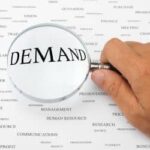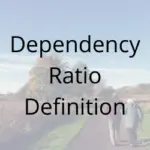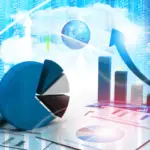Dependent and Independent Variables in Economics
Dependent Variable
In experimental analysis, researchers use independent variables to find out what impact they have on the dependent variable. The dependent variable doesn’t change during the course of the experiment and is held constant.
The purpose of the experiment is to discover whether the dependent variable is linked to a number of independent variables. For example, an economist may look at what variables affect economic growth. The economist may look at factors such as trade restrictions, labor laws, taxes, or other independent variables. The dependent variable will be economic growth as the purpose of the experiment is to find out what variables impact it.
The dependent variable is used to identify what independent variables have a statistically significant impact on it. For example, cornflakes may be growing in popularity, so researchers may want to find out why. The dependent variable is the sales of cornflakes. There are a number of independent variables which may or may not cause the sale of cornflakes to rise. The point of the research is to identify which one is most significant.
Key Points
- An independent variable is changed to see what impact or relationship it has with the dependent variable.
- If the dependent variable changes as a result of a change in the independent variable, then this would suggest there is a cause-and-effect relationship.
Independent Variable
In an experiment, the independent variable is the one by which is changed in order to find out which has a significant statistical impact on the dependent variable. In other words, are the two connected with each other? For example, sales of sneakers may rise as a result of increased spending on advertising. The dependent variable is the sale of sneakers, whilst increased spending on advertising is an independent variable.
There are many independent variables which may have an impact on the dependent variable. For example, the sale of sneakers may increase due to advertising, but they may also increase due to seasonal variations or because the price of other footwear has increased. These other factors are known as independent variables – they may all have an impact on the dependent variable.

Dependent vs Independent Variable
The dependent variable differs from an independent variable in that it is held constant. The dependent variable stays the same, whilst the independent variables will change constantly as researchers aim to find a correlation between the two. For example, researchers may look to learn the most effective way to study. They may look at several variables such as time spent studying, the number of hours of tutoring, or perhaps even diet and other in-direct variables.
The dependent variable will always be the variable that is held constant. It is the main point of focus in the experiment whereby researchers are looking to find a cause to. By contrast, the independent variable is the potential answer as to what is causing the change in the dependent variable.
For example, economists may want to find out what is triggering inflation. As that is the issue being looked at, it is the dependent variable. So the independent variables are compared to the dependent variable. In this case, it is inflation. The aim of which is to find out what is causing it. Potentially independent variables may include a boom in consumer spending or an increase in the money supply.
Independent and Dependent Variable Examples
Some examples of independent and dependent variables include:
- An economist is trying to analyze what caused a recent increase in the inflation rate. This will be the dependent variable. The independent variable will include potential factors such as the exchange rate, the money supply, the unemployment rate, or consumer spending. All of these may have a potential impact on the dependent variable.
- A patient visits a doctor to find out why they are getting pain in their leg. This is the dependent variable. The doctor may suggest a number of independent variables which may be the cause. For example, it may be onset arthritis or an issue with the cartilage in the knee.
- Researchers may want to find out how sugar free soda affects consumer’s hunger. The dependent variable will be how hungry the consumer is. The independent variable will be the type of soda that is used. For instance, the hunger might be more affected by soda with higher levels of caffeine in.
- Researchers want to find out the impact social media usage has on an individual’s mental health. The independent variable will be the individual’s mental health. The independent variable will be the level of social media usage.
- Psychotherapists are looking to find out what are the main causes of anxiety. An individual’s level of anxiety is the dependent variable. The independent variables may include factors such as diet or quality of sleep.
- Researchers are looking to find out when people are most alert during the day. The dependent variable will be the individual’s alertness. The independent variable will be the time of day.
FAQs on Dependent and Independent Variables
The independent variable is the potential cause and the dependent variable is the effect. In an experiment, researchers will use different independent variables to identify how significantly they impact on the dependent variable – i.e. what effect it has.
A variable is independent if it is one of many factors which could have an effect on the dependent variable. The dependent variable stays the same, whilst researchers use different independent variables to find out what impact it has.
An independent variable is one which is changed by the researcher in order to find out what impact it has on the dependent variable – which is kept constant.
About Paul
Paul Boyce is an economics editor with over 10 years experience in the industry. Currently working as a consultant within the financial services sector, Paul is the CEO and chief editor of BoyceWire. He has written publications for FEE, the Mises Institute, and many others.

Further Reading
 Determinants of Demand - Determinants of demand are the various factors that influence the quantity of a good or service that consumers are willing…
Determinants of Demand - Determinants of demand are the various factors that influence the quantity of a good or service that consumers are willing…  Dependency Ratio: Definition, Formula, Effects & Example - The dependency ratio is the percentage of children and those over 64 years old, compared to the people who are…
Dependency Ratio: Definition, Formula, Effects & Example - The dependency ratio is the percentage of children and those over 64 years old, compared to the people who are…  Economic Efficiency - Economic efficiency refers to the optimal allocation of resources to maximize overall welfare or output.
Economic Efficiency - Economic efficiency refers to the optimal allocation of resources to maximize overall welfare or output. 